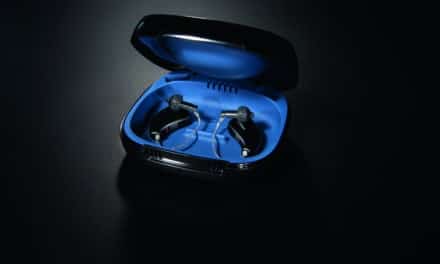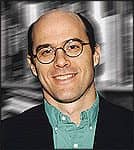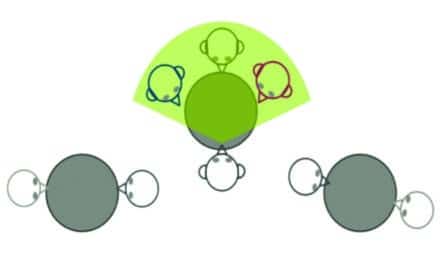Oticon prepares to introduce the hearing health care market to the Delta.

Hearing Products Report asked Gordon Wilson, vice president of marketing with Oticon Inc USA, Somerset, NJ, to talk about the company’s start in Denmark more than 100 years ago and the newest technologies it plans to unveil at this year’s AAA convention.
HPR When and how did Oticon get its start? What was the company’s focus at that time?
Wilson Oticon got its start in 1904, when founder Hans Demant started importing American-made hearing aids into Denmark. The company focus at that time was on importing high-quality hearing aids and distributing them in Denmark. After the Second World War, the focus switched to manufacturing hearing aids.
HPR When and why did Oticon decide to expand into the US market? How do the European and American markets compare, in terms of products and marketing?
Wilson Oticon first set up a facility in the United States in 1965. Initially, the aim was to market and distribute Oticon’s BTE instruments, although since the early 1980s, there has also been an ITE production facility. The European market has traditionally differed most significantly from the US market in that there has always been a much higher percentage of BTE instruments fitted in Europe than in the United States. Recently, it would appear that this trend is beginning to change, as the US BTE percentage now is around 40%.
HPR Oticon made a big splash in the industry when it released the Syncro hearing system, which uses artificial intelligence. Tell us about the device and the role you foresee for such technology in the future.
Wilson Syncro2 remains the most advanced hearing instrument on the market. Most people remember Syncro as the hearing aid with artificial intelligence (AI). However, Syncro is also unique in three other areas. First, it is the only device that uses a multiband adaptive directional system that can be a split directional mode—omni in the low frequencies and directional in the highs. This means that Syncro can remain in directional mode in many situations where other systems have to switch to omni. Second, it is the only device that has a Voicefinder circuit, which can recognize speech in noise and vary the level of noise management so that it does not reduce speech understanding when applying narrow band noise reduction. Third, it is the only hearing aid in the world that uses the Voice Aligned Compression rationale developed by the Eriksholm Research Center. This curvilinear rationale applies less compression to higher input levels to assist speech understanding in difficult listening situations. Syncro uses artificial intelligence to manage the interaction of these three systems. The AI system in Syncro is programmed to measure the output signal of the hearing aid so that it always achieves the best combination of feature settings to optimize the voice-to-noise ratio at any given moment in time. We believe this to be a far more accurate means of setting the instrument in constantly varying sound environments than predictive systems, which simply move between a few basic hearing programs. In the future, we believe that all hearing aids will implement AI decision-making systems—simply because these give the best results for the end user.
HPR Please talk about some of the other products for which Oticon is best known, and which part of the market they serve.
Wilson Oticon has traditionally been best known for our Power BTEs. This is a small but important segment of the market to which we continue to devote a large amount of resources. Most recently, we introduced Sumo DM, the most advanced Super Power BTE available. It has proven to be a very popular device among people with severe and profound hearing losses. In the past year, Oticon has also focused on making advanced hearing technology more affordable. Last year, we surprised many in the industry by introducing the AI-based Tego and Tego Pro instruments into the mid-priced segment. These products have rapidly become the most sold hearing instrument line Oticon has ever produced, and they have contributed to our increasing market share worldwide.
HPR Which product(s) can the industry expect to see Oticon unveil at the AAA convention?
Wilson Oticon will unveil the Delta hearing device at AAA. We see Delta as crucially important in attracting a younger demographic to hearing care. With Delta, we believe that we have finally developed a hearing device that people will actually want. It is aimed at the first-time user market, which has a great reluctance to purchase hearing aids. Delta is a new hearing device consisting of a receiver in the ear and a tiny triangular-shaped amplifier, which sits behind the ear. It looks simply fantastic in the hand and is virtually invisible when worn. It has an unmatched performance in delivering speech understanding in noise to people with mild and high-frequency hearing losses. At AAA, Oticon will also introduce a new range of high-end hearing instruments. Finally, we will also unveil a very exciting new FM system that sets new standards in classroom FM.
HPR What does Oticon encompass now, in terms of facilities and employees?
Wilson Oticon has expanded significantly in recent years. On a worldwide basis, William Demant Holdings—Oticon’s parent company—employs some 5,000 people, and around 400 of them work for Oticon Inc in the United States. In October 2005, Oticon moved into a large, new, futuristic world headquarters building just outside of Copenhagen. In the United States, we have undergone a recent expansion of our facilities, but we will soon have to move our administration to new premises to accommodate our ever-growing need for space.
HPR How have things changed since Peer Lauritsen became president of the company’s US operations in July 2005?
Wilson Peer brings a strong focus on sales, coming from his 30-year background in working in sales for Oticon in the United States. Most recently, we have seen a significant increase in the number of account managers employed by Oticon. We will also see an increased focus on pediatrics and FM in the coming year.
HPR What was the impetus for creating the Oticon Foundation and what is the foundation’s role?
Wilson The Oticon Foundation was created in 1957 by Oticon’s owners, William and Ida Demant. The foundation owns a majority share holding in William Demant Holdings. The foundation supports a large number of charitable causes throughout the world, and is a significant contributor to research in the United States. Recently, the foundation provided $1.8 million for a 3-year research project with the Walter Reed Army Medical Center Audiology Research Group, Washington, DC, and the Veterans Affairs research division in Portland, Ore. The goal of the project is to use a reverse engineering approach to better understand the distortions caused by sensorineural hearing loss, with the ultimate goal of creating signal processing that can counteract these distortions.
HPR How is Oticon connected to the Eriksholm Research Center? What is the center’s focus?
Wilson The Eriksholm Research Center is Oticon’s center for psychoacoustic research and is one of the leading centers of fundamental hearing research worldwide. The role of this facility is to provide sound scientific research on issues related to the treatment of hearing loss. This research can then be implemented into various hearing instrument development projects. For example, it is this center that developed Oticon’s proprietary sound processing rationales, such as the Voice Aligned Compression rationale used in Syncro and the Clarity rationale used in Delta.
HPR What is some of the current research being conducted at the research center and who is involved?
Wilson Much of what Eriksholm is involved in is not something we make public prior to the research results being released. Currently, there are some 22 people employed at Eriksholm, and they are involved in a variety of fundamental psychoacoustic research projects. An important part of the effectiveness of Eriksholm stems from the ties that the center has with research universities and institutes throughout the world.
HPR What do you believe separates Oticon from its competitors?
Wilson I have worked for Oticon for 15 years, and I am the member of the Oticon Inc management team with the least tenure! I think that the experience of our people is one thing that separates us from many of our competitors. We also have a “People First” philosophy, which was handed down from those who founded our company. What this means is that the fundamental reason why we are in this business is to improve the quality of life for people with hearing loss. It also means that we have high ethical and business standards that translate into being a fair and reliable business partner for those hearing care professionals who choose to work with us.
HPR What are the company’s plans for the near future and on a long-term basis?
Wilson To be the largest and most successful hearing aid manufacturer in the world and in the United States! For the past 10 years or so, we have been growing at up to 20% annually and we are currently number two in the world. Our aim is to grow significantly in the United States and to achieve this by delivering superior products and backing them up with the best customer service and professional support in the industry.





